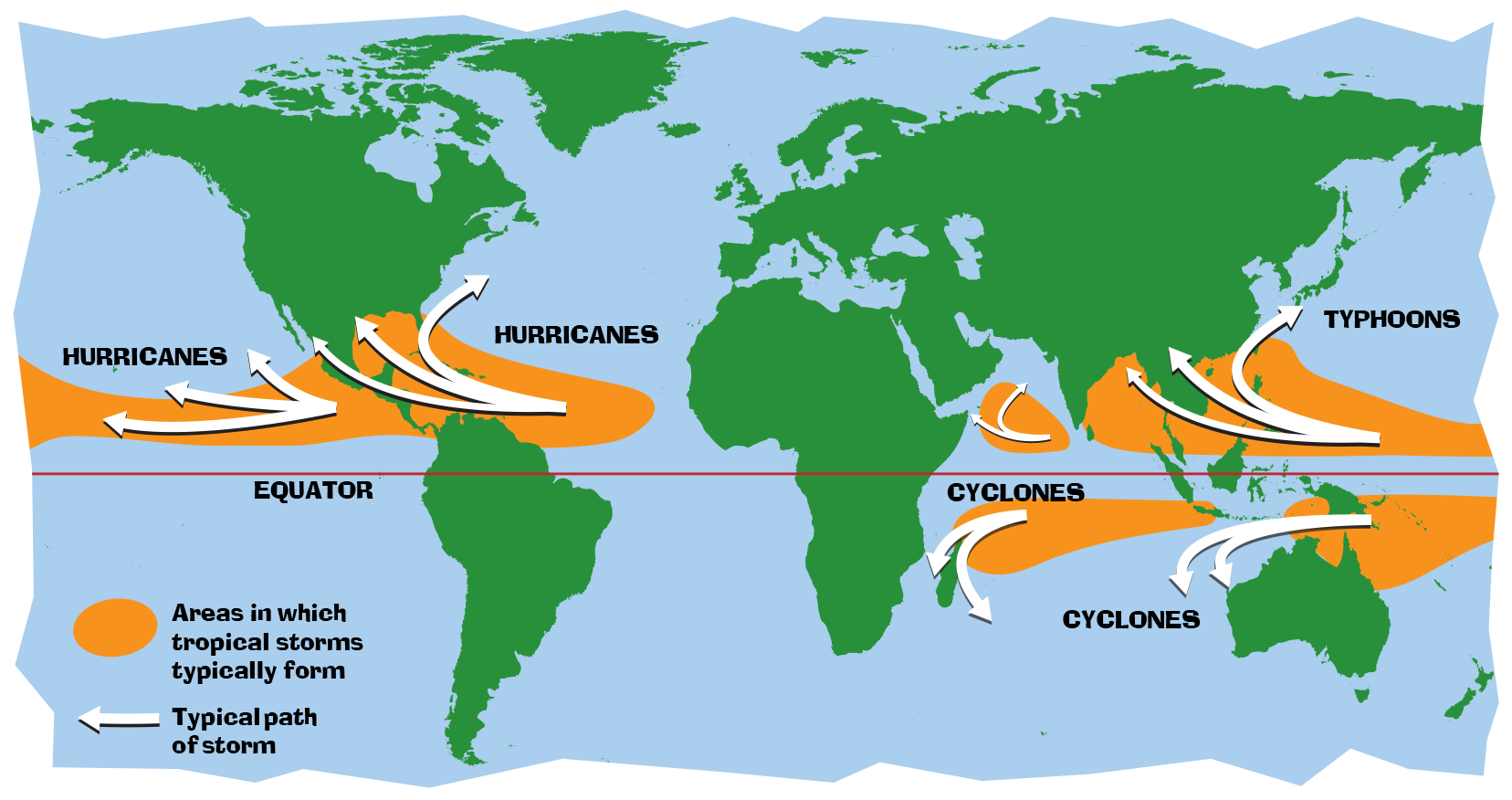Relevance: Prelims/Mains: G.S paper I: Geography: Details about the process of Tropical Cyclone Naming
Introduction:
• Tropical cyclone Amphan intensified rapidly in the Bay of Bengal to become a “Super Cyclonic Storm” – the equivalent of a strong Category 4/weak Category 5 on the Saffir Simpson scale. It weakened ahead of landfall on Wednesday 20 May as a very severe cyclonic storm (strong Category 2 equivalent), bringing dangerous winds, storm surge and flooding to coastal areas of West Bengal in India and Bangladesh.
• Amphan (pronounced Um-Pun) impacted densely populated areas, including the Indian city of Kolkata (Calcutta) at a time when restrictions due to the COVID-19 pandemic is complicating disaster management – and making it more necessary than ever before.
Tropical Cyclone Naming:
• Tropical cyclones can last for a week or more; therefore there can be more than one cyclone at a time. Weather forecasters give each tropical cyclone a name to avoid confusion. Each year, tropical cyclones receive names in alphabetical order.
• Women and men’s names are alternated. The name list is proposed by the National Meteorological and Hydrological Services (NMHSs) of WMO Members of a specific region, and approved by the respective tropical cyclone regional bodies at their annual/bi-annual sessions. Nations in the western North Pacific began using a new system for naming tropical cyclones in 2000.
• There is a strict procedure to determine a list of tropical cyclone names in an ocean basin by the Tropical Cyclone Regional Body responsible for that basin at its annual/biennial meeting. There are five tropical cyclone regional bodies, i.e. ESCAP/WMO Typhoon Committee, WMO/ESCAP Panel on Tropical Cyclones, RA I Tropical Cyclone Committee, RA IV Hurricane Committee, and RA V Tropical Cyclone Committee.

• Hurricane Committee determines a pre-designated list of hurricane names for six years separately at its annual session. The pre-designated list of hurricane names are proposed by its Members that include National Meteorological and Hydrological Services in the North/Central America and the Caribbean. Naming procedures in other regions are almost the same as in the Caribbean. In some of the regions, the lists are established by alphabetical order of the names. In other regions, the lists are established following the alphabetical order of the country names. In general, tropical cyclones are named according to the rules at a regional level.

• World Meteorological Organization maintains rotating lists of names which are appropriate for each Tropical Cyclone basin. If a cyclone is particularly deadly or costly, then its name is retired and replaced by another one.
Objective:
• It is important to note that tropical cyclones/hurricanes/typhoons are not named after any particular person. The tropical cyclone/hurricane/typhoon names selected are those that are familiar to the people in each region.
• Obviously, the main purpose of naming a tropical cyclone/hurricane is basically for people easily to understand and remember the tropical cyclone/hurricane/typhoon in a region, thus to facilitate tropical cyclone/hurricane/typhoon disaster risk awareness, preparedness, management and reduction.
For more such notes, Articles, News & Views Join our Telegram Channel.
Click the link below to see the details about the UPSC –Civils courses offered by Triumph IAS. https://triumphias.com/pages-all-courses.php

